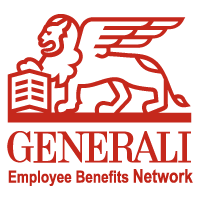How to leverage benefits to support return to work after sick leave
Employers often struggle with how best to leverage the early intervention support on offer within their existing benefits packages when looking to support struggling employees.
Getting a grasp on this – and anything else offering early intervention support – could be key to helping employees take fewer short and long-term absence in the first place.
Some absence is inevitable but, in certain cases, it might also be preventable.
Achieving the latter involves taking a much more proactive and joined-up approach to wellbeing promotion and absence management.
Getting the best from existing benefits
A third (33%) of employers say their organisation is much more reactive (taking action when people have gone off sick) than proactive (promoting good wellbeing).
Leveraging the benefits you already have in place is key to shifting towards a more preventative approach.
This also needs to be balanced with considering the workplace culture in which those benefits sit.
More than half (53%) of organisations have a standalone wellbeing strategy.
This is an improvement from only 40% five years ago.
It’s debatable whether the 50% of companies that have a ‘standalone’ strategy are able to help employers consider everything in a workplace that contributes to wellbeing.
This includes the culture – and employee engagement and experience as inextricably linked to that – as well as benefits and interventions.
Why change is needed?
There’s a lot of talk about the effects that long-term illness in the UK is having on the economy.
People in their 20s are more likely to be not working due to ill health than those in their early 40s, according to one report.
This seems to overshadow the fact that long-term illness is also an ever-growing problem for the economically active – those currently employed.
Employee sickness absence in the UK is at the highest level for more than a decade, according to the Chartered Institute of Personnel and Development.
Mental ill health and musculoskeletal (MSK) injuries represent the top two causes of both short-term and long-term absence.
Absence driven by work
Prior to the height of the Covid-19 pandemic, working days lost per employee due to self-reported work-related issues was broadly flat.
The current rate (1.31 working days lost per employee), is higher than the 2018/19 pre-Covid level, according to the Health & Safety Executive.
Stress, depression or anxiety and MSK disorders accounted for the majority of days lost due to work-related ill health in 2022/23; 17.1 million and 6.6 million respectively.
In short, there are a lot of reasons to focus on prevention as well as cure; to take a more proactive and joined-up approach to wellbeing promotion and absence management.
How to shift from reactive to proactive
- Understand that mental wellbeing underpins everything. Workplace culture has a big role to play in that. Consider culture as part of wellbeing strategy, collaborating cross-functionally to help make that happen. The National Institute for Health and Care Excellence (NICE) set out guidelines to help employers with this.
- Encourage employees to use of all the wellbeing and early intervention services and support on offer. Some providers will even extend certain services to whole workplace populations (even immediate families), not just those insured under a group risk policy. In addition, put in place a framework to ensure that GIP insurers are being notified of absence early – ideally day zero – or whenever an absence looks like it might become long-term, so support needs can be assessed early; for both the employer and employee.
- Ensure anyone long-term absent is given the return-to-work support they want. Speak to the employee to see what type of communication they want while they’re off sick. Long-term absence can lead to feelings of disconnect, loss of hope and self-worth. And this can layer on top of the original reason for absence, leading to an downward spiral. And speak to your GIP insurer. Their experts will assess the individual’s needs and provide access to specialist pathways of support, wherever appropriate. They will also help the employer – and their employee – ensure a sustainable return-to-work when the time is right.
Supplied by REBA Associate Member, Generali Employee Benefits Network
Generali Employee Benefits' solutions are to protect and enhance the wellbeing of their workforce.








